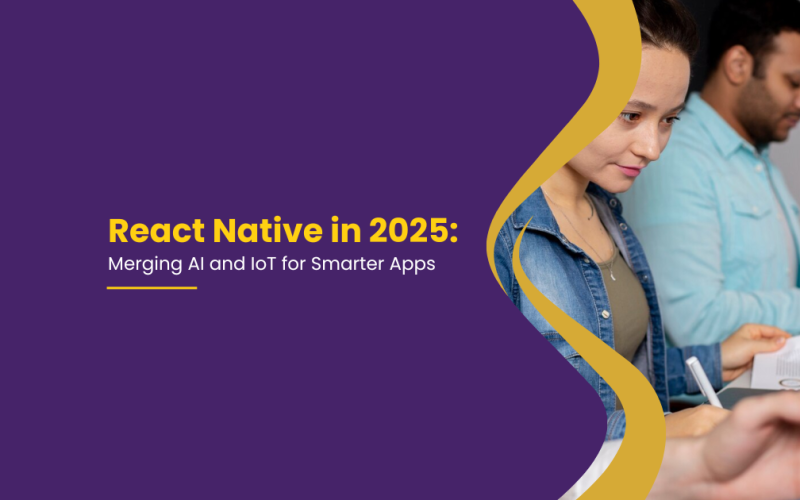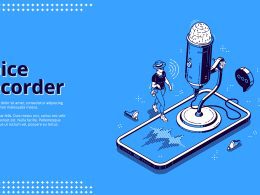Introduction
By 2024, React Native powers applications used by over 1 billion active users worldwide, while the global app market is projected to reach $935 billion in revenue by 2026. Additionally, businesses integrating AI into their mobile apps have witnessed a 40% increase in user engagement, and IoT-connected devices are estimated to surpass 29 billion by 2030.
In the rapidly evolving world of mobile app development, React Native has emerged as a frontrunner for building cross-platform applications. This open-source framework, developed by Facebook, enables developers to create mobile apps that work seamlessly on both iOS and Android platforms, using a single codebase. As of 2024, React Native is used by some of the largest companies in the world, including Facebook, Instagram, Airbnb, and Uber, showcasing its scalability and performance capabilities.
What Makes React Native Unique in App Development?
1. Cross-Platform Compatibility
One of the main draws of React Native is its ability to support both iOS and Android from a single codebase. Traditionally, developers would have to write separate code for each platform, which could be time-consuming and expensive. React Native, however, allows for the creation of cross-platform applications with native performance, meaning businesses can target both platforms without having to double their development efforts.
2. Faster Development Cycle
React Native uses a hot-reload feature, which allows developers to instantly see the changes they make to the code in real time. This dramatically speeds up the development cycle and leads to faster iteration. As a result, development teams can address bugs and feature requests more quickly, making it an excellent choice for businesses that need to get products to market faster.
3. Cost-Effectiveness
Since React Native allows developers to use a single codebase for multiple platforms, the overall cost of development is significantly lower compared to building two separate native apps. Additionally, with a large pool of developers and an active open-source community, businesses can find qualified professionals without the high costs of hiring specialists for each platform.
4. Strong Community Support
React Native has a vibrant and extensive community of developers, which makes it easier to find resources, troubleshoot problems, and discover new tools and libraries. This community support ensures that the framework stays up-to-date with new features, security patches, and best practices.
How AI is Revolutionizing React Native App Development
AI is no longer a futuristic concept—it’s actively shaping the development of mobile applications. React Native developers are increasingly integrating AI capabilities into their apps to deliver more personalized and intelligent experiences for users.
1. Personalized User Experiences
AI enables React native App Development Services offer personalized content based on users’ behavior, preferences, and past interactions. For example, AI-powered recommendation engines can suggest products, media, or services based on individual usage patterns. Apps like Netflix and Spotify already use such algorithms to recommend shows and music to users, and React Native is increasingly being used to build these types of applications.
2. Natural Language Processing (NLP)
NLP allows apps to process and understand human language, enabling voice-based features like chatbots, virtual assistants, and voice commands. Integrating NLP in React Native apps can enhance the user experience by allowing for more intuitive interactions. For instance, apps like Siri and Alexa, which rely heavily on NLP, could potentially be developed using React Native to offer cross-platform voice functionalities.
3. Image Recognition
AI-powered image recognition is another area where React Native apps are benefiting. Whether for augmented reality (AR), object detection, or facial recognition, incorporating AI into React Native applications can open new doors for features such as product scanning, security identification, or visual search engines.
4. Predictive Analytics
Using AI-driven predictive analytics, React Native apps can analyze historical data and predict future trends. This is especially useful for apps related to finance, health, or e-commerce. For example, a fitness app could predict the user’s next workout based on their progress, while a retail app might predict the products a user is most likely to purchase based on browsing history.
5. Automation
AI can also automate repetitive tasks within apps, such as user feedback collection, error reporting, or content moderation. Automating these tasks not only saves time but also ensures that developers can focus on building more innovative features for users.
Read More: Why You Should Hire App Developers in India from Quytech
IoT: The New Frontier for React Native App Development
The Internet of Things (IoT) is connecting devices and objects in ways that were previously impossible. As IoT becomes more widespread, the role of React Native in connecting and controlling these devices becomes increasingly important.
1. Real-Time Data Processing
IoT devices generate vast amounts of real-time data. React Native apps can collect, analyze, and present this data in a user-friendly format, allowing users to make informed decisions quickly. For example, a smart home app could display real-time data from security cameras, thermostats, and other devices to give users full control over their environment.
2. Remote Device Control
React Native enables developers to create applications that control IoT devices remotely. Whether it’s controlling smart lights, security systems, or even industrial equipment, React Native’s ability to integrate with various hardware via APIs allows users to interact with devices from anywhere.
3. Wearable Technology Integration
Wearables, such as smartwatches and fitness trackers, are a growing category in IoT. React Native is particularly well-suited for creating apps that can communicate with wearable devices, syncing health data, notifications, and other personalized information. This is a huge market with growing opportunities, especially in health and wellness applications.
4. Industrial IoT
In the industrial sector, IoT is being used to monitor machinery, track inventory, and improve workflow efficiency. React Native can help businesses build apps that allow workers to monitor and manage these devices on the go, optimizing operations and reducing downtime.
How React Native Overcomes These Challenges
Despite these challenges, React Native provides solutions that help overcome many of these obstacles.
1. Extensive Library Support
React Native’s large ecosystem of libraries and modules helps developers integrate AI and IoT more easily. From machine learning libraries to IoT communication tools, there are libraries available to simplify development.
2. Performance Optimization
With tools like React Native Performance Monitor, developers can identify and optimize performance bottlenecks, ensuring that AI and IoT features don’t negatively impact the app’s performance.
3. Strong Community Contributions
The active React Native community regularly contributes to open-source libraries and frameworks that make AI and IoT integration smoother. This collaborative effort helps solve many of the challenges that developers face.
4. Cost-Effective Development
The ability to develop for both iOS and Android using a single codebase ensures that companies can integrate AI and IoT without incurring the cost of developing separate apps for each platform.
Future Trends in React Native, AI, and IoT
1. 5G Integration
With the rollout of 5G networks, React Native apps will benefit from faster data transmission speeds, enabling real-time AI-driven decision-making and IoT device management on a larger scale.
2. Advanced AI Features
Expect more sophisticated AI capabilities in mobile apps, including advanced computer vision,natural language understanding, and real-time predictive analytics. As AI algorithms become more powerful and efficient, React Native apps will be able to offer even more personalized and intelligent user experiences.
3. Edge Computing
With the growing demand for real-time data processing, edge computing will become increasingly important. Rather than relying solely on cloud-based servers, React Native apps will leverage edge devices (such as IoT sensors and local servers) to process data closer to where it’s generated. This will significantly reduce latency and improve app responsiveness, particularly for applications involving real-time IoT data.
4. Expansion of Wearables
The market for wearables, from fitness trackers to smartwatches, continues to grow. As more devices collect data on users’ health, activity, and even mental well-being, React Native apps will evolve to integrate with these devices seamlessly. This opens new opportunities for fitness, wellness, and health monitoring apps that can work with a wide variety of wearables.
Conclusion
The future of React Native, AI, and IoT is incredibly bright, with businesses in every sector from healthcare and security to retail and manufacturing embracing these technologies to create smarter, more efficient, and more connected mobile experiences. As AI and IoT continue to advance, integrating these technologies with React Native will open up new possibilities for app development.
A React Native App Development Company can leverage the platform’s extensive library support, performance optimization tools, and strong community to address challenges such as data security, high computational demand, and integration complexity. Looking ahead, the integration of 5G, edge computing, and the growing adoption of wearables will further enhance the capabilities of React Native apps. These technologies will not only improve performance but also create more immersive, real-time user experiences.












